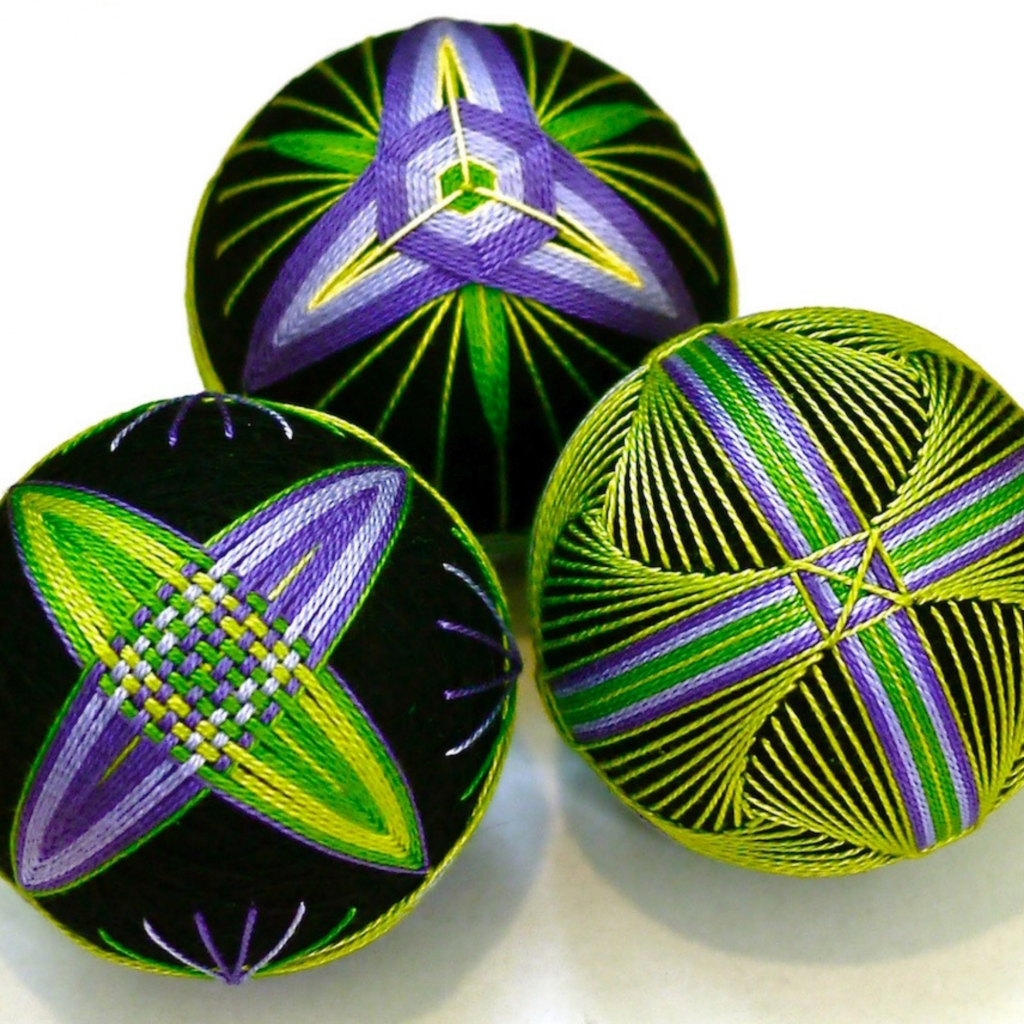Intro to Temari
Apr 23, 2021 5:00PM—8:00PM
Categories Virtual
Topics Needlework

Temari (te = hand, mari = ball) is an addictive form of Japanese embroidery stitched on a geometrically-divided, spherical base. In this class, you’ll learn basic temari techniques and start your journey of transforming thread into complex, beautiful designs and myriad geometric shapes. Start by wrapping a core before class and then focus on the other main points of temari construction – dividing the surface and making the pattern – during class. Once you have these basics down, you can change thread colors, change how you weave over and under existing threads, or change the order you do the stitching to create new patterns. Oh, the possibilities!
Dana Watson has been stitching temari since 2007 when she attended a demonstration by Barbara Suess. Immediately hooked, she is now a member of the Japan Temari Association. Dana teaches annually at the John C. Campbell Folk School and also teaches and demonstrates online. She lives in Durham, North Carolina with her spouse, dog, and an ever-increasing stash of thread.
$45 – $54
Additional Supply Fee: None.
Scholarship Available: No
Level: Beginner
Number of Students: 4-8
Required Supplies: Visit https://dkwatson.wordpress.com/2020/03/30/temari-materials-list/ for online retailers and additional information.
- Wrapped core. Must be completed before class! Visit www.youtube.com/watch?v=MkKTL1eo02U for a tutorial. Your completed core should be about 1.5″ in diameter although the exact size isn’t crucial.
- Core material (crumpled plastic bags, shredded paper, small fabric/yarn scraps, rice hulls, potpourri, styrofoam ball, …) – about one cup filling material or 3 plastic bags
- A sock, stocking, or piece of fabric to contain the core material
- Yarn (cheap baby yarn or similar)
- Serger thread or other fine machine thread – 3 cones are ideal, but not necessary (nothing shiny or slippery or containing a stretch fiber)
- Size 5 perle cotton- 3 or more colors
- Metallic thread (optional)
- 1/4″ wide paper strips (quilling paper, paper run through a strip shredder, or hand-cut strips)
- Ball-head pins
- Long darning needle or Sashiko needle
- Scissors
Date and Time: We’ll meet virtually from 5-8 pm on Friday, April 23rd. (You’ll receive the class Zoom link in your registration confirmation email and we’ll provide the link again in a reminder email just before the first class.)
